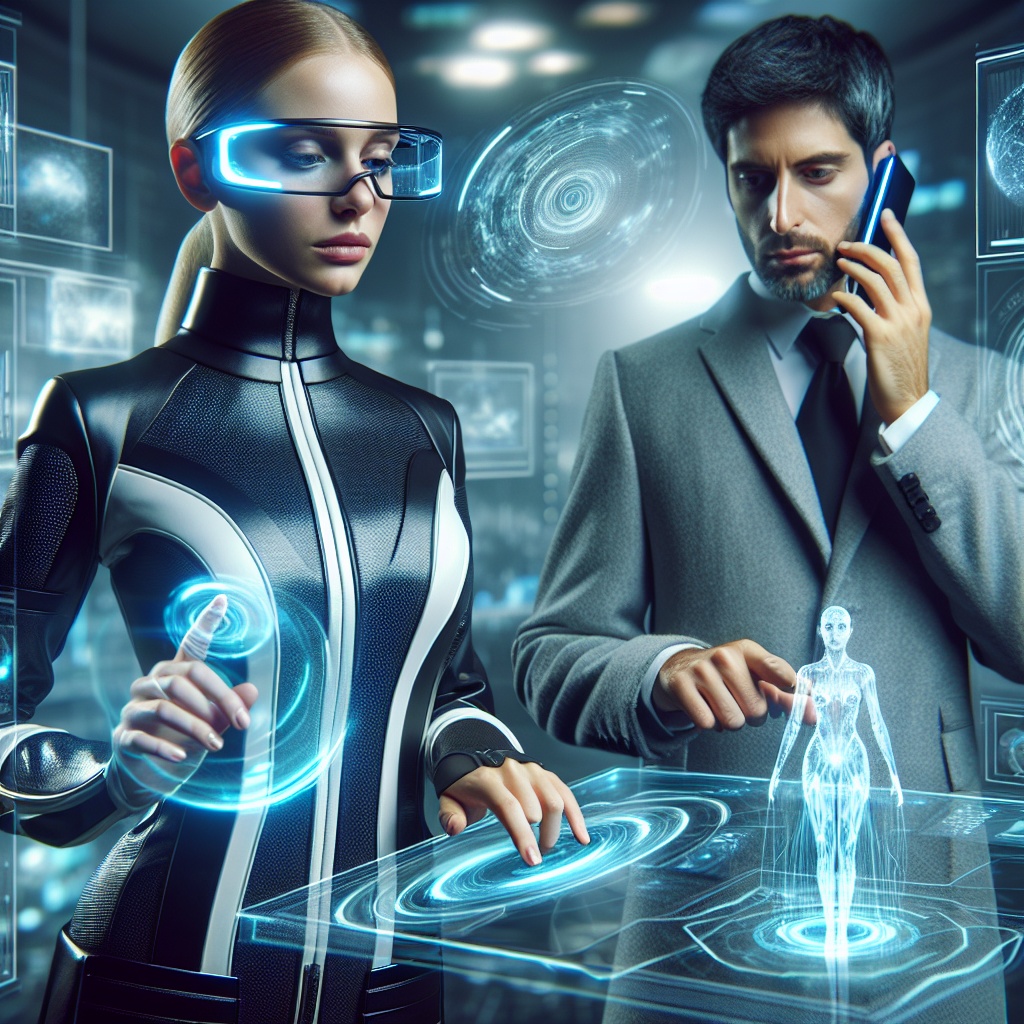Embracing the Future: An Insight into ChatGPT and Its Revolutionary Communication Capabilities
In today's rapidly evolving tech landscape, artificial intelligence (AI) continues to reshape our methods of communication and interaction. ChatGPT, a product of OpenAI, is at the forefront of this transformation, bringing AI technology directly into our everyday conversations. Let’s delve into how ChatGPT is changing the way we communicate, the implications of its integration in phone-based communication, and the exciting future it promises.
The Power of Conversational AI
Conversational AI has transformed how we think about communications. Gone are the days when AI was relegated to merely answering simple queries. Now, it stands as an intelligent conversational partner capable of engaging in dynamic discussions, learning from experiences, and providing real-time assistance. Such advancements in natural language processing enable tools like ChatGPT to interact with users seamlessly.
With the introduction of voice features, ChatGPT is not just limited to text interactions anymore. The capability to call ChatGPT directly and converse with it opens a whole new realm of possibilities. Imagine having a knowledgeable assistant at your fingertips—one who can provide answers, suggestions, and guidance just by a voice command.
The User-Centric Approach to AI Integration
In the recent unveiling of its voice capabilities, OpenAI has emphasized the user-centric approach to democratizing AI. By allowing users to call ChatGPT directly at 1-800-CHAT-GPT (1-800-242-8478), the team is making AI accessible in a manner that feels both familiar and personal. This innovative feature is all about reducing barriers, encouraging more people to explore the world of AI without intimidation or complexity.
Implementing ChatGPT into everyday communication channels such as phone calls and messaging apps is a strategic move to enhance user engagement. The convenience of simply dialing a number and engaging in a conversation with a powerful AI breaks down traditional barriers that may have deterred users from leveraging these advanced technologies.
Enhanced Interaction: The WhatsApp Connection
Along with phone calls, ChatGPT is now available through WhatsApp, a platform known for its widespread use and user-friendly interface. This integration allows users to chat with AI in a format they are already accustomed to, making it easier than ever to seek help, gather information, or even engage in casual banter with an AI counterpart.
The implications of such integrations are far-reaching. For businesses, this means improved customer service with AI handling routine inquiries, allowing human agents to focus on more complex issues. For individuals, it represents a new era where AI acts as a personal assistant, guiding them through their day-to-day tasks and decisions effortlessly.
Bridging the Gap: AI's Role in Communication
As communication technologies evolve, the role of AI such as ChatGPT becomes more pronounced in bridging the gap between information and understanding. Users can pose questions about various topics, and with its extensive training on diverse datasets, ChatGPT can provide insights that are both informative and engaging.
Furthermore, the AI’s ability to retain context during conversations allows for more meaningful interactions. Users can have rich discussions, delve into topics in-depth, and explore different perspectives—something that traditional chatbots have struggled to deliver.
OpenAI is making significant strides in ensuring that users receive a personalized experience tailored to their needs. By integrating user feedback and ongoing training, ChatGPT is not merely a static tool but a dynamic, evolving entity that learns and grows alongside its users.
Future Prospects: The Next Steps for ChatGPT
Looking ahead, the future of ChatGPT and similar technologies appears bright. As AI continues to advance, we can expect to see enhanced features like deeper personalization, improved contextual understanding, and greater accessibility across various platforms. The potential for AI-driven communication tools is limited only by our imagination.
Moreover, advancements in security and privacy measures will be crucial as these technologies become more integrated into our daily lives. Users must feel confident that their communications are secure and private while interacting with AI systems. OpenAI has committed to prioritizing user trust and safety as a fundamental part of its mission.
As we embrace the use of AI in our communications, it is essential that we remain vigilant about the ethical implications of such technologies. Balancing innovation with responsibility will be paramount in ensuring a beneficial relationship between humans and AI.
The excitement surrounding ChatGPT exemplifies how technology can enhance our daily interactions, making processes simpler and more efficient. As we move forward, let's welcome the changes AI is bringing to the landscape of communication with open arms.
Conclusion: A New Era of Engagement
In conclusion, the integration of ChatGPT into traditional and modern communication platforms marks a significant evolution in how we connect with technology. OpenAI’s commitment to making AI accessible through voice calls and messaging provides an example of how user-centered design can lead to transformative experiences.
As we continue to explore the expansive potential of AI in our lives, it is crucial to remain mindful of the responsibilities that come with such advancements. ChatGPT symbolizes a future where AI not only serves as a tool for convenience but as a partner in our daily conversations, enriching our lives in ways previously unimagined.
This dynamic interplay between technology and communication is just the beginning. As we embrace these innovations, the possibilities are endless, inviting us to explore an exciting new world of AI-powered engagement.
Related News
- ChatGPT Goes Mobile: Revolutionizing AI Accessibility
- Exploring the Evolving Landscape of AI: ChatGPT's Voice and Vision Capabilities
- A Deep Dive into ChatGPT: Features, Upgrades, and User Experiences
- OpenAI's Advanced GPT-4 Voice Mode: A Game-Changer in AI Interaction
- Unraveling the Enigma of Phone Call GPT: A Fusion of AI and Modern Telephony
